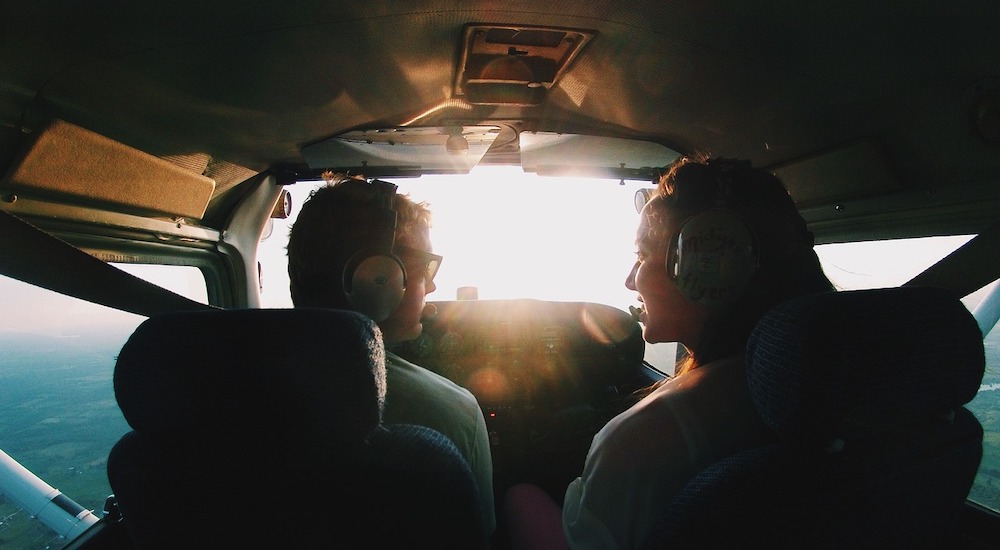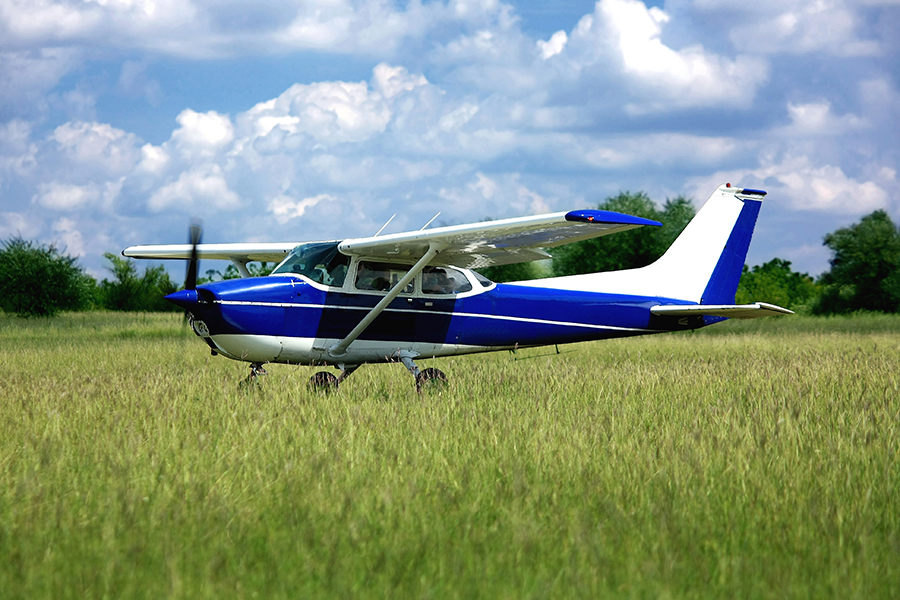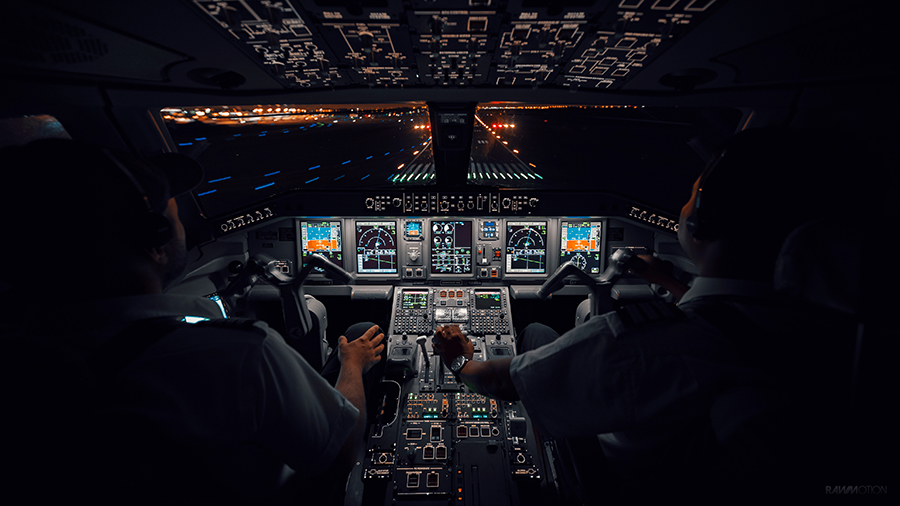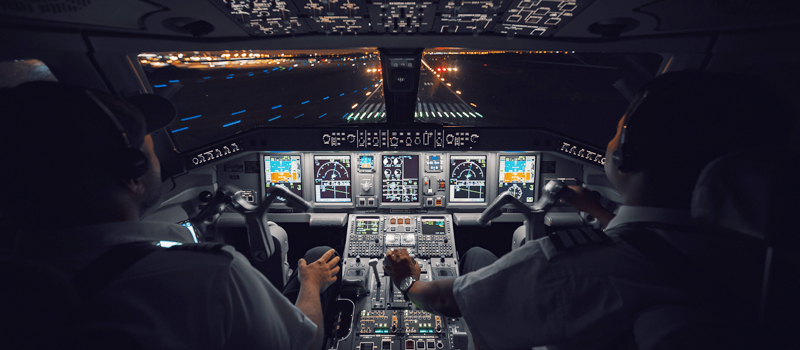-
Before Talking about the Hours
-
Hours Required to Become a Pilot Vary
- Pilot Certificate
- Aircraft Type
- Flight School
- Flight Frequency
- Pilot Aptitude
- Other Factors
-
How Many Hours to Become a Student Pilot
-
How Many Hours to Become a Sport Pilot
-
How Many Hours to Become a Recreational Pilot
-
How Many Hours to Become a Private Pilot
-
How Many Hours to Become a Commercial Pilot
-
How Many Hours to Become an Airline Transport Pilot
-
How Many Hours to Become a Flight Instructor
-
Tips to Get your Pilot License in Fewer Hours
- Fly Frequently
- Choose Carefully
- Plan Ahead
- Study Well and Be Prepared
- Enroll in a quality online ground school
- Stay Healthy
-
The Bottom Line
| License | Hours | |
| Student Pilot | 0 (zero) | |
| Sport Pilot | 20 | |
| Recreational Pilot | 30 | |
| Private Pilot | 40 (Part 61) | 35 (Part 141) |
| Commercial Pilot | 250 (Part 61) | 190 (Part 141) |
| Airline Transport Pilot | 750 – 1,500 | |
| Flight Instructor | 10 – 25 and a Commercial Pilot license |
It takes a minimum of 35 hours of flight time to get a Private Pilot license, which is the first license most pilots get. However, on average it takes students 55 hours of flight time to get their Private Pilot license. If you want to fly for the airlines you will need an Airline Transport Pilot (ATP) license, which requires a minimum of 1500 hours of flight time.
Becoming a pilot is a thrilling pursuit. Whether you’re starting your aviation career or want to learn to fly for fun, congratulations.
You’re in for an amazing ride.
But how many hours does it take to become a pilot?
That sounds like a simple question warranting a straightforward answer. That’s not the case, though.
The flight time you need to become a pilot varies depending on the type of pilot license, aircraft, and flight school.
Other factors come into play as well, such as how often you fly, your aptitude, the complexity of the airspace you fly in, the type of aircraft you fly, the weather in your area, and your flight instructor’s experience.
And while minimum hours exist, you’ll probably need quite a few more to become a pilot. Consider this, the national average is between 55 and 70 hours to become a private pilot. That’s nearly twice the FAA minimum.
But I digress, so, let’s get back on track. How many hours does is it take to become a pilot?
Well.
Before Talking about the Hours
Who decides how many hours it takes to become a pilot? What are the rules? What is a flight hour?
Those are all questions that you, budding pilot, must wonder about. Before the hours, let’s touch on a few important definitions, which will come up throughout the article.
FAA stands for the Federal Aviation Administration, a governmental agency of the Department of Transportation that regulates, oversees, and ensures the safety of civil aviation within the United States.
FARs are the Federal Aviation Regulations, a set of rules issued by the FAA governing all aviation activities in the US. With the FARs, you’ll find the requirements, minimum hours, and anything that has to do with getting a pilot license.
Flight Time is the duration starting from when the aircraft’s engine starts until it stops. Therefore, a Flight Hour is 60 minutes within that time frame.
An Airplane is an engine-driven, fixed-wing aircraft that’s heavier than air, meaning it weighs more than the air it displaces. In simpler terms, it’s an aircraft that “flies” (compared to an aerial vehicle that “floats” like a balloon).
Cross Country refers to flights with the point of landing at least a straight-line distance of at least 50 nautical miles from the original point of departure (without stopping).
That’s enough definitions for now, you probably won’t remember them in a few minutes. Now let’s talk about something more interesting.
Hours Required to Become a Pilot Vary
We briefly mentioned the variables affecting how many hours it takes to become a pilot. Let’s discuss them here in more detail.
Pilot Certificate
To become a pilot, you need a certificate (or a license). One license to fly them all? That’d be cool, but in reality, pilot certification consists of several types of licenses.
Each type of pilot license comes with its eligibility, aeronautical knowledge, and flight time requirements. For example, you need zero hours to get a student pilot license, while it takes 1,500 hours to become an airline transport pilot.
Aircraft Type
Do you want to fly a small airplane like the Cessna 152? Or would you like to do stunts in an aerobatic aircraft like the Extra 330SC?
Is it a helicopter, a glider, or maybe a small jet airplane? Time to become proficient in flying an aircraft changes between different types.
Flight School
Different schools, different rules. The FAA, in all its wisdom, allows flight school to operate either under part 61 or part 141 of the FARs.
What you need to know is that a Part 141 flight school has lower minimums. Why? Because the FAA demands more requirements, structure, and paperwork from such a school. This also means a higher cost of training in most cases.
Flight Frequency
Another factor that influences the number of hours required to become a pilot is how often you fly. Flying a few times per week is very different from a couple of flights a month. As a general rule, the more often you fly, the less expensive your overall training will be. You certainly will retain knowledge a lot better without long gaps between lessons.
Pilot Aptitude
Your natural ability to grasp and master flying skills plays a key role in how long it takes to reach the required standard of proficiency.
Some people just got a knack for it.
Other Factors
What else influences the number of hours you need to become a pilot?
Quite a few, actually.
These include weather, your flight instructor’s experience, and the condition of your training aircraft.
Although you can’t change or improve certain aspects, you may be able to make your flight training more effective.
But more on that later on.
How Many Hours to Become a Student Pilot
Zero, that’s how many hours you need to obtain a student pilot certificate.
Actually, you don’t even need a student pilot license to start your flying lessons. It’s required only before you start flying solo.
How many hours to be ready for your first solo? It depends.
While some students need less than 10 hours, others take as much as 40. Want to know more? Here’s what LeRoy Cook, a seasoned flight instructor, has to say about it.
How Many Hours to Become a Sport Pilot
Most pilots begin their aviation journey with a lucrative airline career in mind, but some want to fly for the fun of it. For the latter, a sport pilot certificate is a great option.
As a sport pilot, you may fly a variety of aircraft, including light sport airplanes, gliders, balloons, or gyroplanes.
The FAA set the minimum total flight training time to 20 hours, which must include at least 15 hours of flight instruction and 5 hours of solo flight.
That’s for light sport airplanes, though. If you’re planning on flying other aircraft, you may want to check the Electronic Code of Federal Regulations (e-CFR) for more details.
How Many Hours to Become a Recreational Pilot
A recreational pilot license is similar to sport, but it allows you to fly bigger, more powerful airplanes.
Naturally, this requires more flight hours.
To get the license, you need at least 30 hours, including a minimum of 15 hours of flight training, 3 hours of solo flight, and 2 hours of cross country.
How Many Hours to Become a Private Pilot
Remember when we talked about the different types of flight schools under the FAA rules?
In a Part 141 flight school, you need at least 35 hours to get the private pilot license (PPL). Those 35 hours must include a minimum of 20 hours of instruction time and 5 hours of solo flight.
That threshold goes up to 40 hours in a part 61 flight school, though, including at least 20 hours of training and 10 hours of solo time.
How Many Hours to Become a Commercial Pilot
While training for your PPL, the difference between Part 141 and Part 61 is almost negligible. Especially given that most students need around double the minimum to meet the required standard of proficiency.
The commercial pilot license (CPL), however, is a different story.
Without getting into too much detail, it suffices to say that Part 141 schools have the minimum at 190 hours, while Part 61 schools require at least 250 hours for the CPL.
That’s 60 hours between the two, but each type of school has advantages and drawbacks (that would take a whole article to explain).
While the obvious gap in hours make Part 141 schools more affordable, it all depends on your availability, flexibility, and finances.
How Many Hours to Become an Airline Transport Pilot
Obtaining the Airline Transport Pilot License (ATPL) requires the highest number of hours compared to any other pilot certificate.
Here’s the rundown:
- 750 hours for current or former U.S. military pilots.
- 1,000 hours for pilots with a Bachelor’s degree with an aviation major from an FAA-approved university.
- 1,250 hours for pilots with an Associate’s degree with an aviation major.
- 1,500 hours for pilots with only a commercial pilot license, no degree, and no military flight experience.
Why does it take so many hours? That’s because an ATPL is a requirement to act as captain, or a pilot in command, on scheduled air carriers’ aircraft. Note that you must also be 21 years old before applying for this license.
How Many Hours to Become a Flight Instructor
To become a flight instructor, you need to have a commercial pilot license. As previously discussed, getting your CPL takes between 190 to 250 hours, at a minimum.
Luckily, you only need 25 hours of training time (at a minimum) to become a certified flight instructor, or CFI, on airplanes. Glider Instructors require only 10 hours, though. Realistically, the majority of the expense for a flight instructor lays in the number of ground hours which, while not required, are a necessity to prepare you for the exam.
Additionally, sport pilots can become instructors in as few as 3 hours of training time.
You can also become an instrument certified flight instructor, or CFII, which will take additional training specified in the FARs.
Tips to Get your Pilot License in Fewer Hours
While you can’t change your aptitude or the weather, you can follow these steps to reduce the number of hours you need to become a pilot.
Fly Frequently
When you fly more often, you tend to need fewer hours to become proficient in handling an airplane. The regular, frequent practice allows you to learn how to perform flight maneuvers faster than when you fly more occasionally.
Choose Carefully
If you want to get your pilot license in fewer hours, you need to find a reputable flight school. Ask for recommendations, research online, and even go see the facilities, check the airplanes, and meet the instructors at a few schools.
You also need to choose a flight instructor that you get along with, especially if you’re just starting out. If you’re not comfortable, change your instructor.
Plan Ahead
An indispensable quality in any aviator is thinking ahead. As a pilot, you’re continuously preparing for what’s next. It could be a radio call, a change in direction, or an inflight procedure at a certain time.
Adopting this in your flight training means less training time to become a pilot. Think of the time of the year, your financial situation, and your purpose of becoming a pilot.
For example, if you start your flight training in the winter, you might spend weeks without flying due to the weather. You fly less often, which in turn, causes you to need more flight hours.
Study Well and Be Prepared
“By failing to prepare, you are preparing to fail.” ― Benjamin Franklin
By knowing your airplane inside out, especially in terms of how it flies, you set yourself for success.
A great way to cut training time is by performing flight maneuvers, procedures, and even radio communications at home.
How? Two words: Chair flying.
The simple, yet effective, learning method only involves sitting in a chair and pretending you’re at the controls of an airplane. Thereafter, you can study, practice, and repeat nearly everything you would in an airplane, over and over again.
This makes training in an actual airplane much more efficient. You no longer need to recall what to do from memory, it becomes second nature.
Enroll in a quality online ground school
Sitting down in a cubicle with your flight instructor drawing on a board can get expensive! If you want to cut down the number on the ground, invest in a good quality online ground school. You will get access to the same instructor time, but at a fraction of the cost.
Pilotinstitute.com for example offers a 35 hours ground school for private pilots. At an average cost of $60 or $70 per hour for a flight instructor, that’s a $2100 to $2450 value for a fraction of the cost. Plus you get to watch the videos over and over again if you don’t understand. This will easily save you thousands over time. And with lifetime access, even when you become a certified pilot, you can still go back and get a refresher… for free.
Stay Healthy
Your health and fitness affect your performance, attitude, and capacity to learn during flight training. Ultimately, these elements influence the time it takes you to acquire new skills.
Maintain a balanced diet and exercise regularly to make the best out of your flight hours. It matters little how many hours you fly, what matters is the quality of those hours in the air.
You’ll save a hefty sum too, that’s nothing to sneeze at.
The Bottom Line
Now, you have a good idea about how many hours it takes to become a pilot. We’ve mostly talked about the minimum required hours, though.
To reach the required standard of proficiency, most future pilots need at least a few more hours than the minimum.
While it’s almost certain that you’ll take more than 35 hours to get your PPL, you definitely have a say in “how much more”. You can significantly reduce the hours by flying frequently, carefully choosing your instructor, and practicing at home.
Good luck on your aviation escapade, it’s one to remember!




